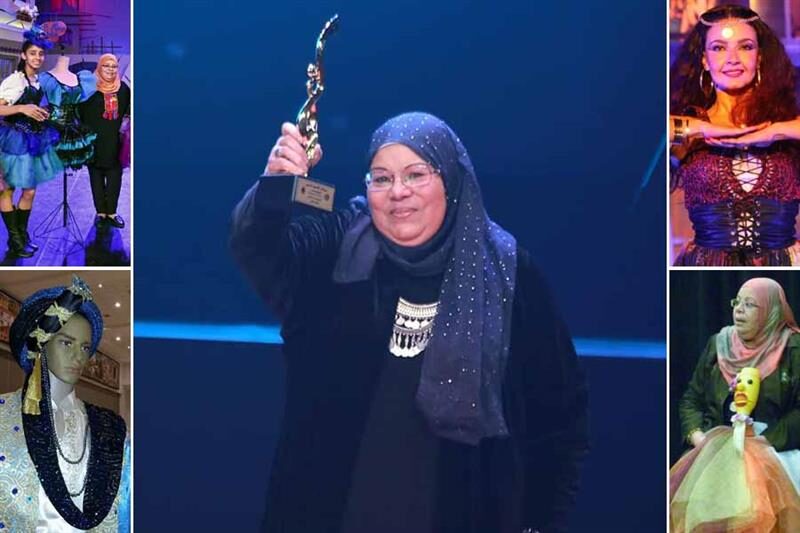Award-winning Egyptian designer Naiema Agamy, who worked over decades with the best-known directors and the most successful theatre troupes, died on Monday in Cairo after a struggle with illness.
Following news of her death, many Egyptian theatre makers expressed their sorrow on social media.
Director Eslam Emam, one of the artists who worked with Agamy in recent months, praised the designer for her boundless effort, dedication, humanity, and the endless love she gave to her work and the team.
Playwright and director Hassan Saad referred to Agamy as “respected, distinguished, and strong” when speaking of the costume designer’s uniqueness in Egyptian theatre.
Film and theatre actor Mahmoud Ezzat said that Agamy’s departure leaves a void in the hearts of artists, while actress Marwa Abdel Moneim underscored Agamy’s creativity and boundless devotion to the theatre.
While many theatre makers from older generation praised Agamy for her artistry and high sense of theatre aesthetics, the younger artists also look up to her as a source of wisdom, at times referring to her as “our beloved grandma.”
Agamy was born in the Cairo district of Saraya El-Koba to a family that was not linked to artistic field. Since early childhood, she was interested in visual arts. By the time she was finishing her secondary education, Agamy’s passion for drawing, especially drawing costumes, was evident.
Despite her father’s hopes for Agamy to become a doctor, she, encouraged by her mother, enrolled at the Fine Arts Academy and focused on set designs for theatre. At the time, the academy did not have a section dedicated to costume design, so set design was the closest that Agamy could get to her passion.
In a televised interview that aired earlier this year, Agamy revealed that most of her practical knowledge of costume design was the result of her own initiative. Following her graduation, she insisted on continuing to work in theatre.
In the 1970s and 1980s, the Egyptian theatre placed importance on scenography, yet, as Agamy clarified, costume design was not supported with equal strength. Even if the designs served the play’s purpose, Agamy’s creativity introduced materials that were not commonly used in Egyptian theatre.
This unique view on costumes was first discovered by Samir Al-Asfoury, who chose to work with her in his plays. As such, Agamy’s first design for theatre was for Al-Asfoury’s Ya Antar.
Ever since, numerous directors expressed their interest to work with the young designer. The following decades she created costumes for many known theatre plays staged on state and commercial theatres.
She worked in Ya Mesafer Wahdak (1998), one of the first plays brought renowned actress Mona Zaki to the spotlight before her entry to cinema.
Other well-known plays that saw Agamy’s costumes include The Black Rabbit (Al Arnab Al Eswed, 1999), directed by Essam El-Sayed; King Lear (2019), directed by Tamer Karam and starring Yehia El-Fakharany; Leila Mn Alf Leila (One of a Thousand Nights), a 2015 play also starring El-Fakharany and directed by Mohsen Helmi; Mahadet El-Kohl, directed by Intessar Abdel-Fattah; Al Motafael (The Optimist), directed by Eslam Emam, Al-Touq wa Al-Aswara (The Necklace and the Bracelet), an adaptation of Yehia Al-Taher Abdullah’s novel with dramaturgy by Sameh Mahran and directed by Nasser Abdel-Moneim; to name but a few.
Apart from the abovementioned directors, Agamy also worked with other well-known figures in Egyptian theatre such as Hani Mutawa, Ahmed Abdel Halim and Khaled Galal, who represent different generations.
The works that Agamy participated in always gathered the best names in Egyptian Theatre. For instance, one of her recent costume designs was for the children’s theatre play Alice in Wonderland, where she worked with renowned set designer Hazem Shebl and puppet and mask designer Mohamed Saad.
Agamy’s designs were awarded at a number of theatre festivals in Egypt, her latest award being at the 14th National Festival of Egyptian Theatre, which was held in October this year.
This award was in recognition of her designs for The Hunchback of Notre Dame, a play directed by Nasser Abdel-Moneim at Taliaa (Avant Gard) Theatre. This was the second time Agamy worked on a play based on Victor Hugo’s famous novel. In the 1990s, she designed costumes for a different take on The Hunchback, a play based on movement only, directed by Sherif Sobhy and also staged at Taliaa Theatre.
Apart from her work in costume design, Agamy held a number of important positions in the Egyptian theatre: as director of promotion in Taliaa Theatre, stage design director at Taliaa Theatre, stage design director at National Theatre, and supervisor of costume design at the Egyptian Creativity Centre, among other administrative posts.
This article was originally published by Ahram Online on December 28, 2021, and has been reposted with permission. To read the original article, click here.
This post was written by the author in their personal capacity.The opinions expressed in this article are the author’s own and do not reflect the view of The Theatre Times, their staff or collaborators.
This post was written by Ati Metwaly.
The views expressed here belong to the author and do not necessarily reflect our views and opinions.


















